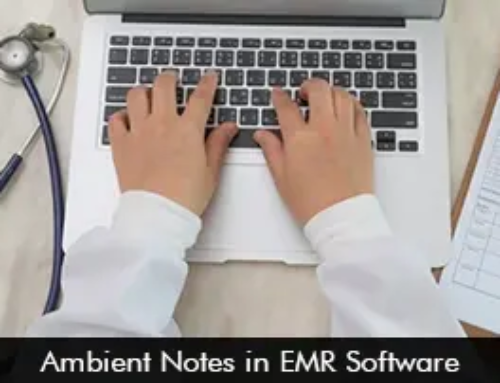The process of recording and storing patient-related information in an Electronic Health Records (EHR) system is referred to as EHR documentation. An EMR Software is a computerized version of a patient’s paper medical chart that includes their medical history, diagnoses, treatment plans, prescriptions, test results, and other pertinent medical data. EHRs are intended to improve healthcare professionals’ accuracy, accessibility, and overall administration of patient data.
Time spent by Physicians on EMR Documentation
Electronic Medical Records (EMR) Software technology has been deployed in 90% of office-based physicians in the USA. The robust platform has helped practices simplify daily workflows and improve patient care.
Keeping the benefits of EMR software aside it is noted that healthcare providers spend an estimated 4.5 hours a day on clinical documentation according to a recent study. This leaves less time for clinicians to focus on patient care and even vitiates the clinical experience of doctors.
Benefits of Improving EHR Documentation
EMR documentation involves entering, updating, and managing various types of patient information within the electronic system. When the clinical documentation process is streamlined the following benefits can be realized:
- Increased face-to-face time with the patients during an encounter.
- Improved patient satisfaction.
- Reduced chances of physician burnout.
- Enhanced patient safety.
- User experience improves.
Tips to improve EMR Software Documentation
Usage of Structured Templates
Many EHR systems provide standardized templates for various sorts of notes (for example, progress notes and consultation notes). These templates might help providers document the required information in a uniform style.
Educate Staff Members on Clinical Documentation
Make sure that everyone on your team has received training on appropriate EMR documentation procedures. Maintaining consistency is crucial for keeping accurate records.
Harness the Power of Voice Recognition Technology
Many EHR vendors such as athenahealth EMR Software, Epic Solutions, eClinicalWorks Software and many more in the United States have integrated speech recognition capabilities and features into their systems to assist healthcare providers in improving documentation productivity and accuracy. The robust voice-enabled tools enable providers to use voice commands to create notes and find patient information hence streamlining the clinical documentation process.
Optimize the EMR Software Interface
Optimizing the software involves fine-tuning the system to meet practice needs. An EHR software should offer ease of use with minimum clicks. If the interface is cluttered and the provider has to switch back and forth between screens it will only add up to their workload. An intuitive interface will boost efficiency levels and help with the maintenance and management of patient data.
EMR Software Documentation and Compliance
Since patient data is sensitive and protected by laws like the Health Insurance Portability and Accountability Act (HIPAA) in the United States, proper EHR documentation involves adherence to privacy and security standards. To safeguard patient confidentiality and abide by applicable regulations, healthcare practitioners must ensure that patient information is stored, accessed, and transferred securely.








